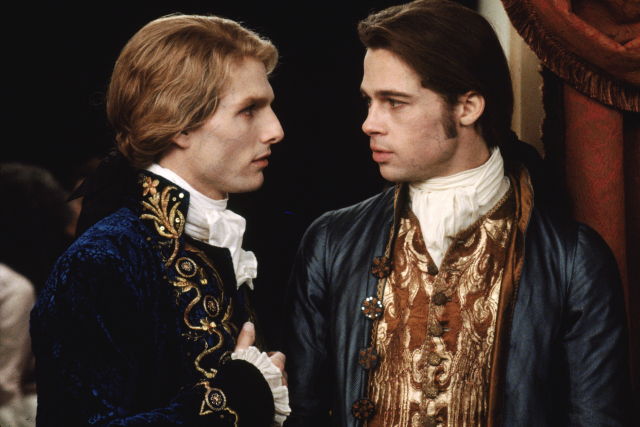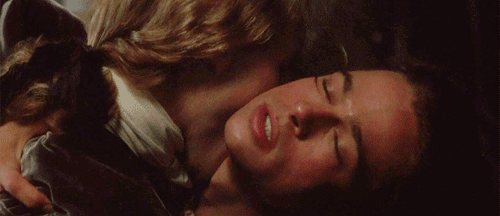Unwrapping the homoeroticism of ‘Interview with the Vampire’
25 years after Tom Cruise and Brad Pitt first had a suck, Juno Dawson examines the queer themes of big screen adaptation of Anne Rice's 1976 novel.
By Juno Dawson

This article first appeared in Attitude issue 306, March 2019
Vampires and homo-eroticism have long gone hand-in-hand. Look at Kiefer Sutherland, who definitely fancies Jason Patric in The Lost Boys.
Then there are the wonderfully lusty Nineties novels by Poppy Z. Brite, while the Spike/Angel subtext in Buffy is barely sub and more text.
But I doubt any of those would exist without Louis and Lestat in Interview with the Vampire. Film rights to Anne Rice’s genre-shaping novel were sold before its 1976 publication, although the movie toiled in development hell until 1994, meaning this year is the adaptation’s silver jubilee.
With rumours that a new director’s cut may finally feature a sex scene between Tom Cruise and Brad Pitt, maybe it’s time for a refresher. Following the death of River Phoenix, Christian Slater stepped in (and donated his fee to Phoenix’s charity foundation) to play Daniel Molloy, a journo who meets maudlin Louis (Pitt) in modern-day San Francisco.

Louis recounts how he met the charismatic Lestat (Cruise), became a vampire, parented an ageless vampire child (an Oscar-nominated Kirsten Dunst who very nearly steals the show), then kind of hooked up with Antonio Banderas (Armand) before reuniting with Lestat decades later for one last encounter.
Even without actual bumming, the movie is still very queer. At its heart, it’s a movie about a highly toxic same-sex relationship.
Very much a qween of the damned, Lestat (Cruise is brilliant, forcing Rice to eat her early criticisms of his casting) seduces masc-4-masc Louis into his world, then coerces his reluctant boyfriend into an (eternal) relationship he only agreed to on the rebound when his missus died.

In “classic scene” style, Louis eventually couples with Armand who is Lestat’s ex. Shady.
This could all be tawdry, but with an enormous budget and Neil (The Crying Game) Jordan at the helm, it just about manages to stay on the sumptuous, decadent side of camp.
There’s no mistaking the homoerotic subtext between the three male leads: Lestat is clearly in love with Louis. There’s a real poignancy to their reunion, when Lestat is an agoraphobic, decaying husk living off rats.
Maybe I’m reading too much into it, but it does feel like seeing that one ex – and I’m sure we all have one – who’s fallen on hard times. It’s heart-breaking and, although Lestat has surely brought it on himself, we wonder if Louis’s love could have somehow saved him.

I’m almost certainly reading too much into seeing Lestat’s hard-partying lifestyle and rapid decline as Jordan’s commentary on the Aids crisis, this being the early 1990s.
Jordan said he was drawn to the film because he felt it was thematically about Catholic guilt. The director described the film as: “the most wonderful parable about wallowing in guilt that I’d ever come across. But these things are unconscious, I don’t have an agenda.”
It’s perhaps no coincidence that the conservative vampires of the Twilight franchise lacked bite – it was all too heteronormative. For whatever reason, vampires work best when sucking blood is a thinly veiled metaphor for sucking cock…
